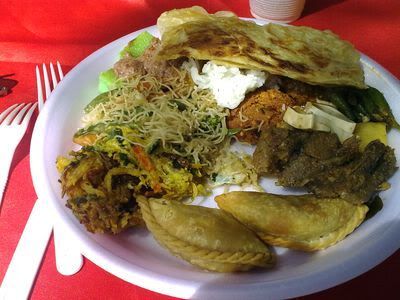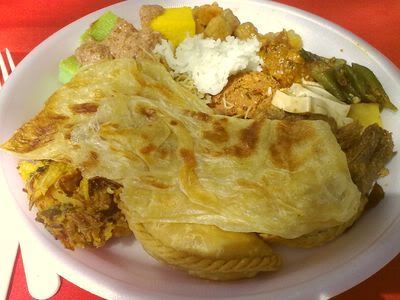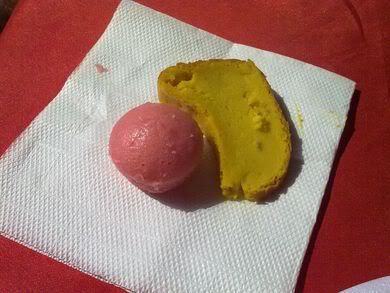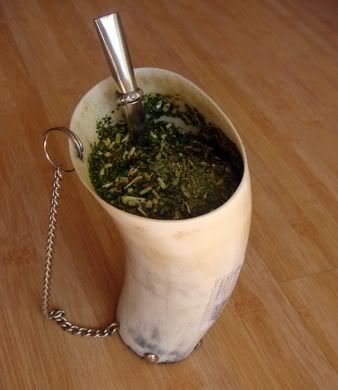As far as I know, there is no Malaysian Restaurant in Brazil (maybe in São Paulo or Rio de Janeiro; the largest cities). Thus, I was really looking forward to try this country's cuisine when I learned about a gastronomic festival held by the Malaysian Embassy.
So, there I was in a hot saturday afternoon ready to try anything that would come my way. And so I did. The menu was extremely diverse, with a wide variety of dishes. Many vegetables, meat, chicken and fish were available with exotic sauces.
The peanut and coconut sauce was particularly savoury. It made a perfect combination with the curry puffs filled with potatoes and vegetables, very similar to Indian samoosa. The prawn fritter was very good as well. There was also a sauteed beef with spices (lemongrass and star anis, I think), a sweet and sour fish and a shrimp salad named "Ulam with Sambal Belacan". All of thoise had me coming back for more... I tried the traditional "Roti Canai"-malaysian pancakes, very similar to a pancake my grandmother used to make when I was a child. It was really delicious.
Roti Canai
The pink cake is made out of rice flour. As for the yellow one, I have no idea what it was.
For the dessert, there was a wide variety of cakes, including the "ant-hill cake" (kek serang semut), which has drawn my attention for being a very common cake in Brazil as well. This is probably a common portuguese heritage?
Finally, they served their traditional tea, the "teh tarik", wich means litteraly "pulled tea". It is a mixture of black tea with milk, with a smooth and foamy texture because of how it is made: the person quickly pours the tea from one jar to another repeatedly, untill it gets the desired constitution. Hence the name "pulled tea".





